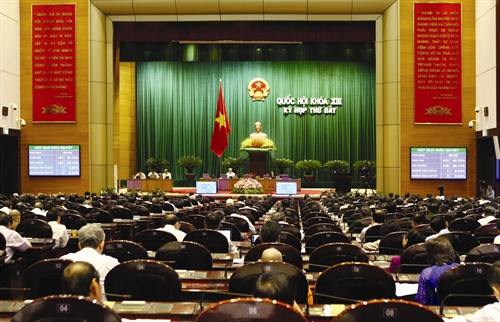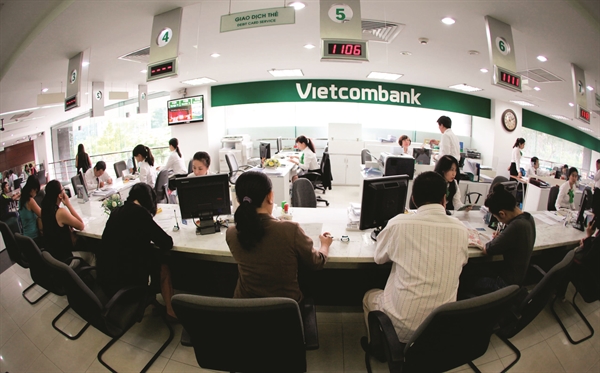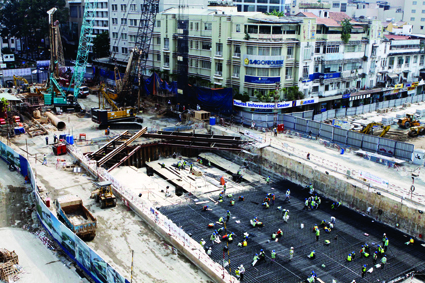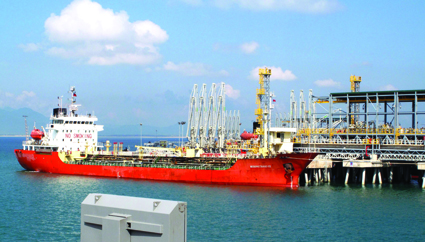Bui Duc Giang
PhD in law
KEY POINTS:
- The 2014 Law on Bankruptcy prohibits payment of secured and unsecured debts in bankruptcy proceedings;
- Enforcement of security on business rescue plan remains a shadow area of the law;
- The requirement of the Administrator or the Asset Management and Liquidation Enterprise’s permission in case of payment of new debts would dissuade new creditors from advancing funds.
Law No. 51/2014/QH13 dated June 19, 2014, on Bankruptcy (the Law on Bankruptcy) is more elaborate than the 2004 Law on Bankrupcty with regard to (i) the suspension of payment of debts owed by the insolvent enterprise and (ii) the stay of proceedings and execution against the insolvent enterprise. The suspension and stay will stop all collection efforts, all harassments and give the debtor company a breathing spell from its creditors. They would permit the debtor company to attempt a business rescue plan. They also reflect the pari passu principle: a distribution to creditors must be done rateably between all creditors in the same category of priority in accordance with all applicable bankruptcy provisions. All creditors are therefore to be treated equally according to the size of their debts, irrespective of the identity of the creditor or the dates when individual debts were contracted[1].
General principles
Payment of secured and unsecured debts
The Law on Bankruptcy addresses the suspension of the performance by the insolvent enterprise of its payment obligations in two separate articles. Indeed, Article 41.3 concerns secured debts while Article 48.1(b) deals with unsecured debts.
Under Article 48.1(b), upon the availability of the decision on commencement of the bankruptcy procedure, the insolvent enterprise may not pay unsecured debts except those arising after the commencement of the bankruptcy procedure and employment debts. This is a prohibition set forth by law with a consequence that in case of breach, the payment will be voidable under Article 128 of the Civil Code.
Under Article 41.3, within five working days from the date the court accepts jurisdiction over a bankruptcy matter, “any competent authority or organization shall temporarily suspend realization of secured assets of the enterprise […] by secured creditors” except if the secured assets are subject to a risk of being destroyed or a considerable decrease in value[2].
However, the Law on Bankruptcy does not specify which would be the competent authority or organization, which could lead to difficulties in the interpretation of that provision.
The question here is from what point of time is the suspension of payment applicable?
The starting point of the suspension is not the same for secured and unsecured debts. Indeed, with regard to secured debts, the suspension of payments starts when the court accepts jurisdiction over the petition to commence the bankruptcy procedure[3] while the insolvent enterprise is prohibited from paying its unsecured creditors from the date of availability of the decision on commencement of the bankruptcy procedure. As such, unsecured creditors are more favorably treated than secured creditors and it is difficult to understand the grounds for such blatant discrimination.
Another question is what would be the date of availability of the decision on commencement of the bankruptcy procedure? The expression “availability of the decision on commencement of the bankruptcy procedure” is mentioned in Articles 47, 48, 49 and 63 of the Law on Bankruptcy and may be construed as the issuance by the court of the decision on commencement of the bankruptcy procedure.
However, under Article 43 of the Law on Bankruptcy, the time limit for the court to (i) send its decision to commence the bankruptcy procedure to the enterprise and its creditors, and (ii) post it on the National Business Registration Portal, its portal and in two consecutive issues of a local newspaper of the locality where the head office of the insolvent enterprise is located, is three working days from the date of issuance of the decision. There is a risk that although the court has issued the decision to commence the bankruptcy procedure, the parties may not be aware of it and therefore might proceed with the payment which would be then null and void.
Realization of secured assets
Article 53.1 of the Law on Bankruptcy gives two options for dealing with the temporary suspension of payment of secured debts: After the commencement of the bankruptcy procedure, the Administrator or the Asset Management and Liquidation Enterprise shall make a recommendation to the court on the realization of secured loans temporarily suspended as follows:
“(a) If the secured assets are used to carry out a business rescue plan, the realization shall comply with the resolutions of the creditors’ meeting;
(b) If the business rescue plan is not carried out or the secured assets are not required for carrying out such business rescue plan, then realization shall be in line with the time stated in the agreement in respect to a security agreement which has become due. As for a security agreement which has not become due[4], prior to declaring the enterprise […] bankrupt, the people’s court shall suspend the contract and settle the secured loans”.
As such, in principle, whether the secured assets are allowed to be realized depends on the implementation of the business rescue plan.
However, Article 91.5 of the Law on Bankruptcy provides that: “In case a business rescue plan involves the use of secured assets, it must specify the period of use of such secured assets and the plan for realization of such secured assets and obtain the consent of the creditors secured by such assets.”
In other words, secured creditors will decide to allow secured assets to be used in the implementation of the business rescue plan or not. Obviously, secured creditors will rarely sacrifice their rights of enforcement.
Furthermore, it is easy to see a contradiction between the provisions of Article 53.1 and Point (a) of this paragraph, if the secured creditor does not agree with the use of the secured asset in the implementation of the business rescue plan, it can realize the secured asset when the secured obligation becomes due and payable while Point (b) of the same paragraph appears not to allow the realization of the secured asset in case such secured asset is necessary for the implementation of the business rescue plan. Hopefully, implementing texts will clarify this Point to avoid difficulties which may arise from the interpretation of Article 53.1. If the creditor’s rights of enforcement were curtailed when the securing party goes into a business rescue plan, there should be clear and pertinent criteria for assessing the necessary nature mentioned in this text in order to balance the interests of the parties concerned[5].
 |
| National Assembly deputies vote to pass the revised Bankruptcy Law __Photo: Doan Tan/VNA |
Debts contracted before the acceptance of jurisdiction or commencement of the bankruptcy procedure
Reading together Articles 48.1(b), 41.3 and 49.1(c) with Article 51 of the Law on Bankruptcy, it can be inferred that debts subject to the payment prohibition are those contracted before the acceptance of jurisdiction or commencement of the bankruptcy procedure by the court.
The time of establishment of a debt claim (or the payment obligation) must be defined. The Civil Code mentions only the grounds on which obligations may arise (Article 281[6]) but remains silent on the time of establishment of an obligation.
In general, the time of establishment of a debt claim is the time of occurrence of the legal act or of formation of the transaction which is the basis on which the debt claim arises. The time of establishment of a debt claim is different from the due date of the debt claim. As such, if the legal act or transaction takes place before the court accepts jurisdiction over the petition or issues a decision on commencement of the bankruptcy procedure, the debt claim is deemed to have arisen before the acceptance of jurisdiction or the commencement of the bankruptcy procedure regardless of the time of payment of the debt claim.
Exceptions
Set-off
Clauses 1 and 2 of Article 63 of the Law on Bankruptcy provide that after the commencement of the bankruptcy procedure, “creditors and an enterprise […] which has become insolvent may set off obligations in respect of contracts which were entered into prior to the decision to commence the bankruptcy procedure,” if so approved by the Administrator or the Asset Management and Liquidation Enterprise.
For instance, if the insolvent enterprise had sold equipment to another enterprise before the commencement of the bankruptcy procedure but has not received full payment of the price while the latter has the right to claim a compensation for the defective items, those debts may be set off.
Similarly, the bank with which the account of the insolvent enterprise is held may set off the credit balance of such account against outstanding amounts of a loan granted by that bank to the account holder prior to the commencement of the bankruptcy procedure.
New finance
In practice, new finance is useful to ensure adequate working capital of the enterprise. Usually, this will be granted by the enterprise’s banks or other major existing secured creditors. In case there are substantial contracts approaching completion, the cost of additional finance may be small in comparison to the income to be received.
Under Article 47.1 of the Law on Bankruptcy, after the commencement of the bankruptcy procedure, the insolvent enterprise may still continue its business operations, but must be subject to the supervision by the court and the Administrator or the Asset Management and Liquidation Enterprise. Basically, this means that in principle, the insolvent enterprise may enter into new contracts which may give rise to new debts owed by it (for instance to suppliers of goods or services). Similarly, during the period of implementation of the business rescue plan, the insolvent enterprise may be granted new finance (Article 88.2(e)), for instance by credit institutions. Clauses 1(c) and 3 of Article 49 provide that upon the commencement of the bankruptcy procedure, payment of debts arising after the commencement of the bankruptcy procedure must be agreed in writing by the Administrator or the Asset Management and Liquidation Enterprise. However, the Law on Bankruptcy does not provide any grounds or criteria on which the Administrator or the Asset Management and Liquidation Enterprise may give such permission but merely prescribes that the Administrator or the Asset Management and Liquidation Enterprise shall report his/her/its answer to the court. The requirement of the Administrator or the Asset Management and Liquidation Enterprise’s permission would dissuade new creditors from advancing funds[7].
It should be noted that only new finance aiming at rescuing the business of the insolvent enterprise will be paid in priority on liquidation of the bankrupt enterprise (Article 54.1(c))
Finally, the Law on Bankruptcy remains silent on payment of new debts secured by the assets of the insolvent enterprise. It can be inferred from the spirit of Article 53 of the Law on Bankruptcy that the secured creditor may realize the secured asset when the secured obligation becomes due and payable in accordance with the security agreement.
Payment of employees’ wages
Article 49.1(c) of the Law on Bankruptcy allows the insolvent enterprise to pay salaries to its employees after the availability of the decision on commencement of the bankruptcy procedure if the Administrator or the Asset Management and Liquidation Enterprise so agrees. Reading this text together with Articles 54.1(b), 70.1(h) and 101.1(b) of the Law on Bankruptcy, it can be inferred that the lawmakers draw a distinction between salaries and other benefits that employees may be entitled to in accordance with their labor agreements or collective labor agreements or more generally with the labor law, such as severance allowance, compensation or allowances for occupational accidents or occupational diseases, etc., in favor of employees. In other words, the enterprise may not pay those sums to its employees[8].
 |
| TopCare, the fifth electric machinery company following WonderBuy, Best Carings, HomeOne and Viet Long, falls bankrupt __Photo: Internet |
Payment of debts in business rescue
The creditors’ meeting is at liberty to decide whether to carry out a business rescue plan (Article 87 et seq)[9]. In accordance with Article 92.1 of the Law on Bankruptcy, as from the effective date of the resolution of the creditors’ meeting approving the business rescue plan, the prohibition against payment of unsecured debts and the getting of prior consent of the Administrator or the Asset Management and Liquidation Enterprise before the payment of debts arising after the commencement of the bankruptcy procedure or the payment of salaries to employees from the date of commencement of the bankruptcy procedure will automatically terminate. In other words, the enterprise may proceed with those payments as it did before the commencement of the bankruptcy procedure.-
Civil obligations arise from the following grounds:
1. Civil contracts.
2. Unilateral legal acts.
3. Unauthorized performance of acts.
4. Unlawful possession or use of or receipt of benefits from property.
5. Causing damage through unlawful acts.
6. Other grounds as provided by law”.









